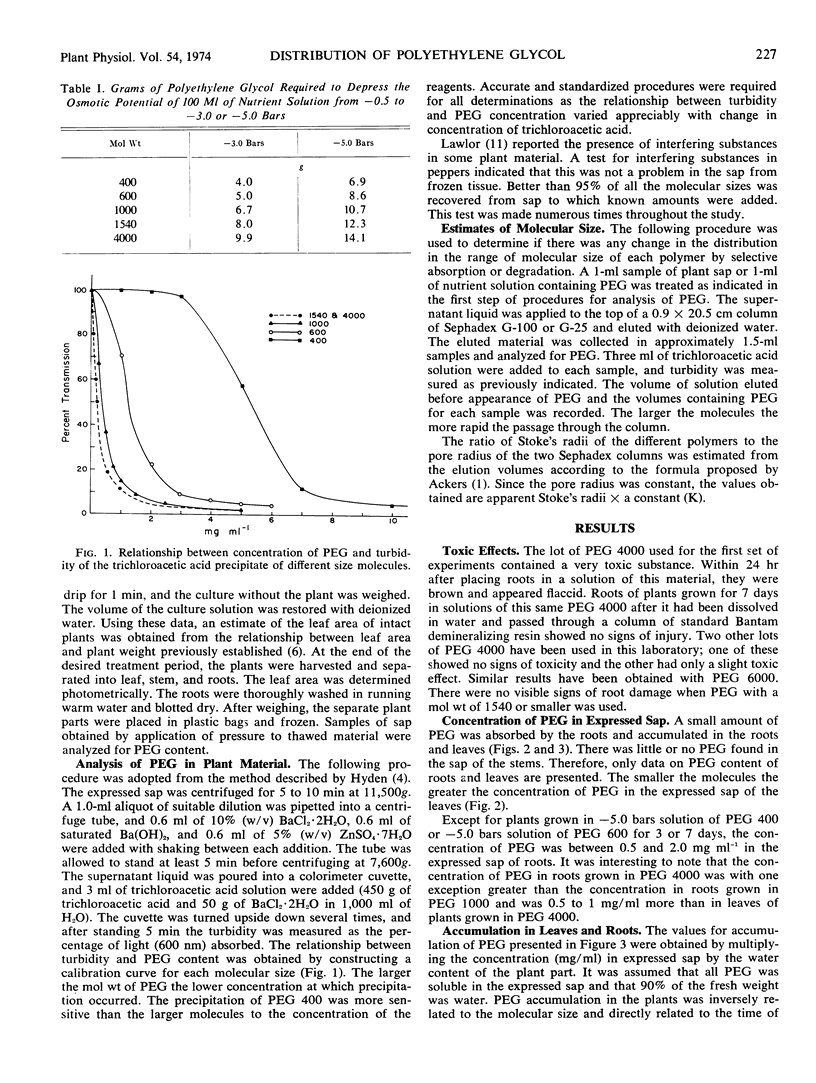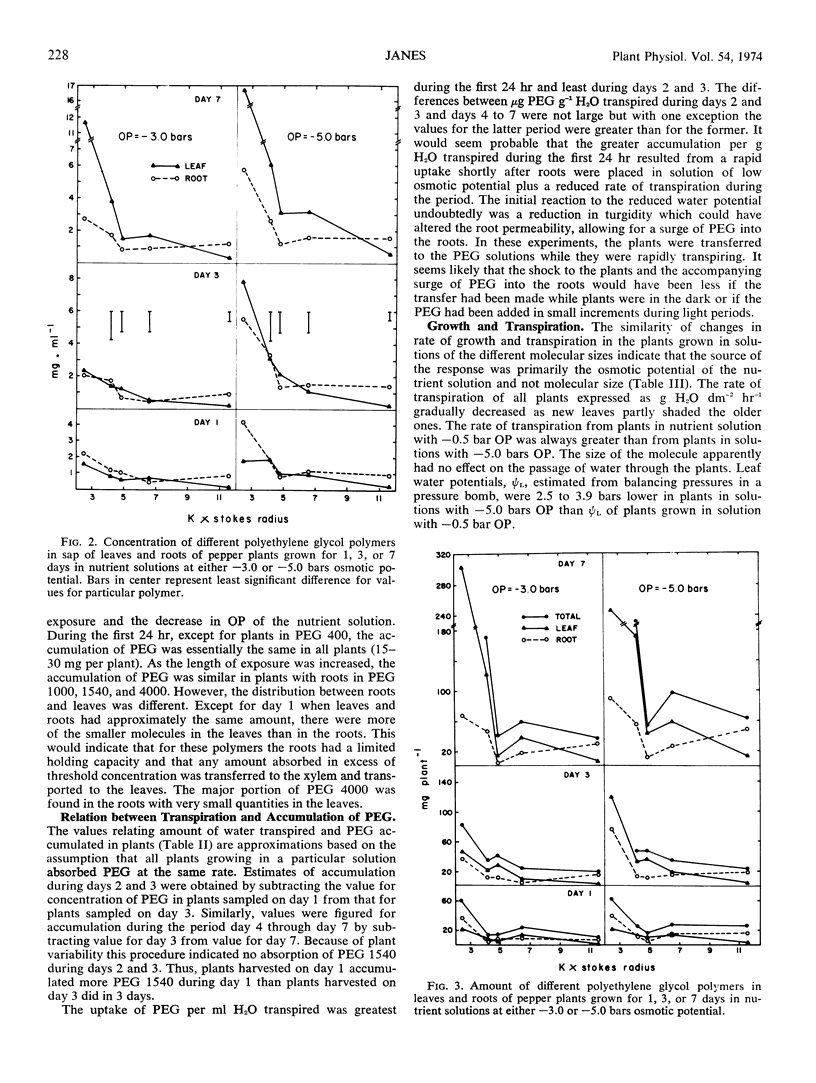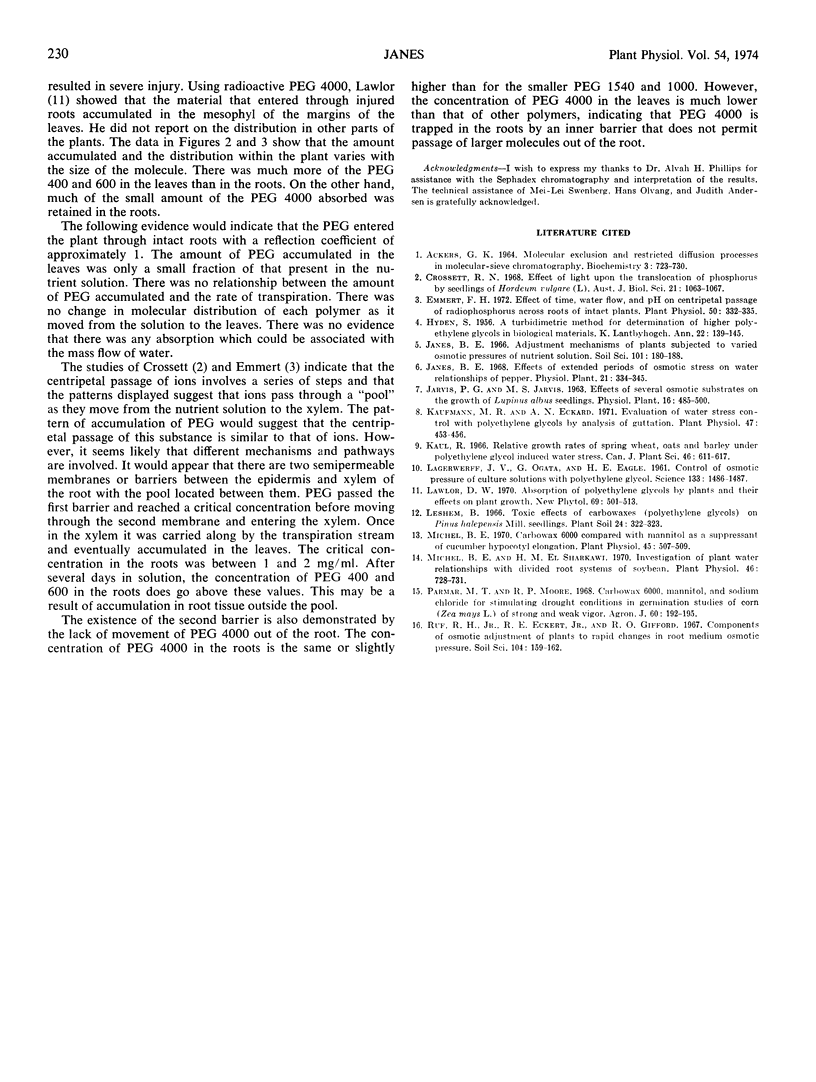Abstract
Pepper plants Capsicum annuum L. var. California Wonder were grown in nutrient solutions of either −3.0 or −5.0 bars osmotic potential, using polyethylene glycol with molecular weights of 400, 600, 1000, 1540, or 4000 as osmotica. Polyethylene glycol with molecular weights of 1000 or 1540 proved most satisfactory as osmotica to decrease the water potential of nutrient solutions.
There was no relationship between the small amount of polyethylene glycol accumulated in the plants and the amount of water transpired. The concentration of polyethylene glycol in the expressed sap of the leaves and the total accumulated was inversely related to molecular weight of polyethylene glycol, was greater at lower osmotic potential of nutrient solution, and increased with time in solution. Except for plants grown in polyethylene glycol 4000, there was more polyethylene glycol in leaves than roots. The indications were that, when the concentration of polyethylene glycol reached a value of 1 to 2 mg per ml, any additional quantity absorbed was transferred to the leaves. The major proportion of polyethylene glycol 4000 absorbed was retained in the roots.
The results of Sephadex gel chromatographs showed that the passage of polyethylene glycol through the plants did not alter the average molecular weight. This indicated that there was no selective absorption of small molecules that might be present as contaminates in the commercial product.
Full text
PDF




Selected References
These references are in PubMed. This may not be the complete list of references from this article.
- ACKERS G. K. MOLECULAR EXCLUSION AND RESTRICTED DIFFUSION PROCESSES IN MOLECULAR-SIEVE CHROMATOGRAPHY. Biochemistry. 1964 May;3:723–730. doi: 10.1021/bi00893a021. [DOI] [PubMed] [Google Scholar]
- Emmert F. H. Effect of Time, Water Flow, and pH on Centripetal Passage of Radiophosphorus across Roots of Intact Plants. Plant Physiol. 1972 Sep;50(3):332–335. doi: 10.1104/pp.50.3.332. [DOI] [PMC free article] [PubMed] [Google Scholar]
- Kaufmann M. R., Eckard A. N. Evaluation of water stress control with polyethylene glycols by analysis of guttation. Plant Physiol. 1971 Apr;47(4):453–456. doi: 10.1104/pp.47.4.453. [DOI] [PMC free article] [PubMed] [Google Scholar]
- LAGERWERFF J. V., OGATA G., EAGLE H. E. Control of osmotic pressure of culture solutions with polyethylene glycol. Science. 1961 May 12;133(3463):1486–1487. doi: 10.1126/science.133.3463.1486. [DOI] [PubMed] [Google Scholar]
- Michel B. E., Elsharkawi H. M. Investigation of plant water relations with divided root systems of soybean. Plant Physiol. 1970 Nov;46(5):728–731. doi: 10.1104/pp.46.5.728. [DOI] [PMC free article] [PubMed] [Google Scholar]


